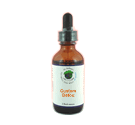 Arthropod/Vector
Bacteria
Chemicals
Fungus /Mold
/ Yeast Metals Parasites Virus Other Arthropod/Vector
Bacteria
Chemicals
Fungus /Mold
/ Yeast Metals Parasites Virus Other
|
Norovirus
Outbreaks of norovirus infection often occur in closed or semiclosed communities, such as long-term care facilities, overnight camps, hospitals, prisons, dormitories, and cruise ships where the infection spreads rapidly either by person-to-person transmission or through contaminated food. Many norovirus outbreaks have been traced to food that was handled by one infected person. When a person becomes infected with norovirus, the virus begins to multiply within the small intestine. After approximately one to two days, norovirus symptoms can appear. The principal symptom is acute gastroenteritis that develops between 24 and 48 hours after exposure, and lasts for 24–60 hours. The disease is usually self-limiting (goes away by itself), and is characterized by nausea, forceful vomiting, watery diarrhea, and abdominal pain, and in some cases, loss of taste. General lethargy, weakness, muscle aches, headache, coughs, and low-grade fever may also occur. Severe illness is rare. Although people are frequently treated at the emergency ward, they are rarely admitted to the hospital. The number of deaths from norovirus in the U.S. is estimated to be around 300 each year, with most of these occurring in the very young, elderly, and persons with weakened immune systems. Symptoms may become life-threatening in these groups if dehydration is ignored or not treated. It is interesting that individuals with blood type O are more often infected, while blood types B and AB can confer partial protection against symptomatic infection. |
|


